PX282 - G5 - solar activity cycle
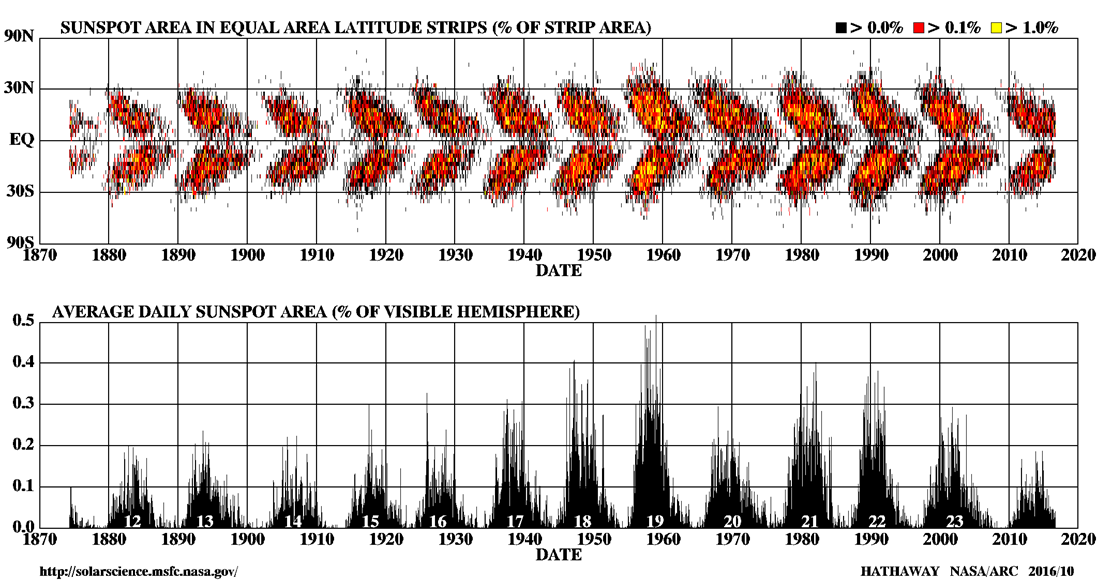
image: hathaway NASA/ARC
- the solar magnetic activity varies in an 11 year cycle
- approaching the maximum, the number of sunspots increases
- at the start of each cycle, sun spots are seen at high latitudes
- later, they emerge closer to the equator
- the x-ray emission also increases

images: carroll & ostile, an introduction to modern astrophysics, 2007
- the magnetic field cycles between toroidal and poloidal due to differential rotation
- this causes the magnetic field to be reversed
- this is called the solar dynamo model
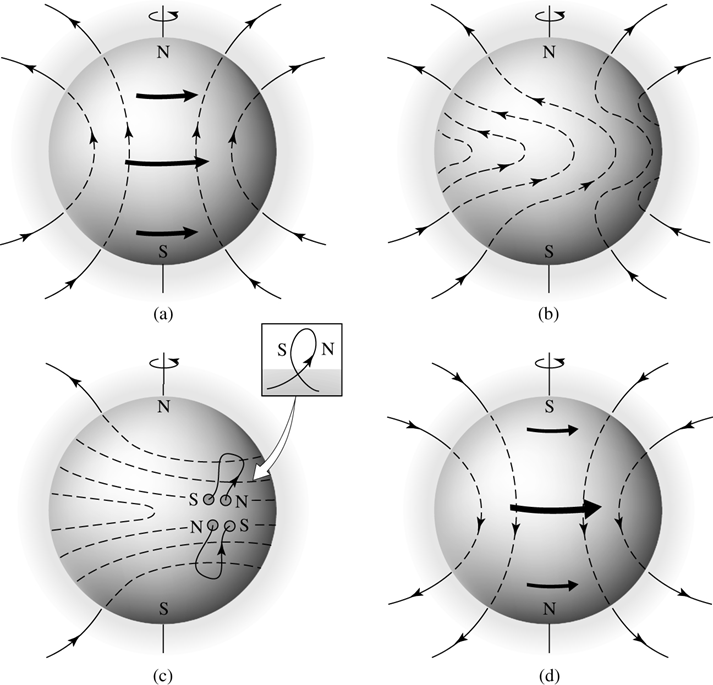
images: carroll & ostile, an introduction to modern astrophysics, 2007
- at the beginning, few sunspots with magnetic field close to a dipole
- differential rotation drags the field lines from poloidal to toroidal
- twisted magnetic flux loops emerge, giving sunspots
- meridional flows drag them towards equator
- opposite polarity toroidal components cancel
- solar magnetic field reverts to dipole with opposite polarity
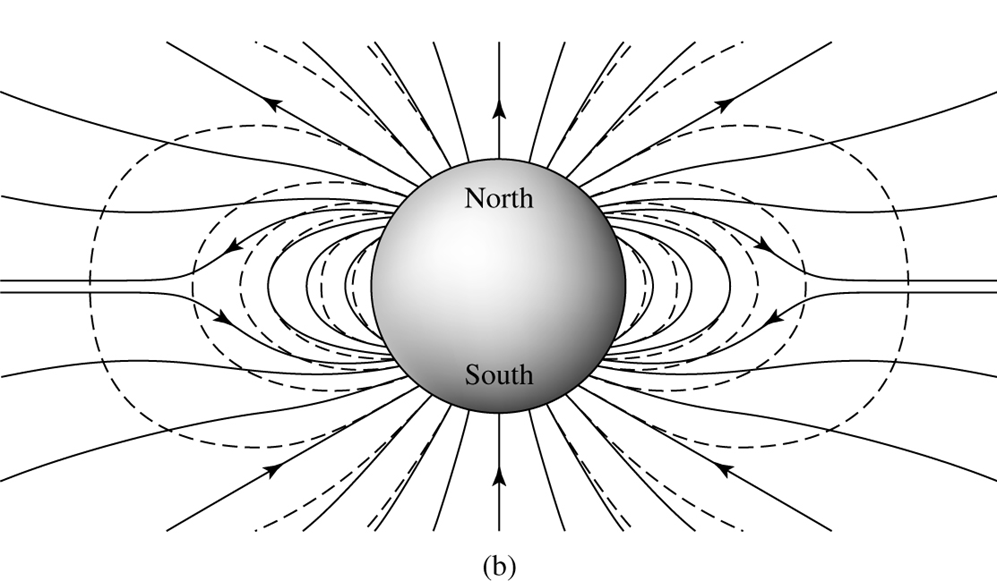
images: carroll & ostile, an introduction to modern astrophysics, 2007
-
the large-scale magnetic field (solid lines) is similar to a dipole (dashed lines)
-
coronal plasma can escape along 'open field lines' as a solar wind
-
this causes the ion tail of comets and can also erode planet atmospheres
-
at earth, solar winds with velocities
, and number densities can be seen
- this is comparable to the coronal temperatures, but an additional energy source is needed to explain this temperature
- it is believed that the winds are assisted by alfven waves propagating along magnetic field lines excited by convection at the photosphere
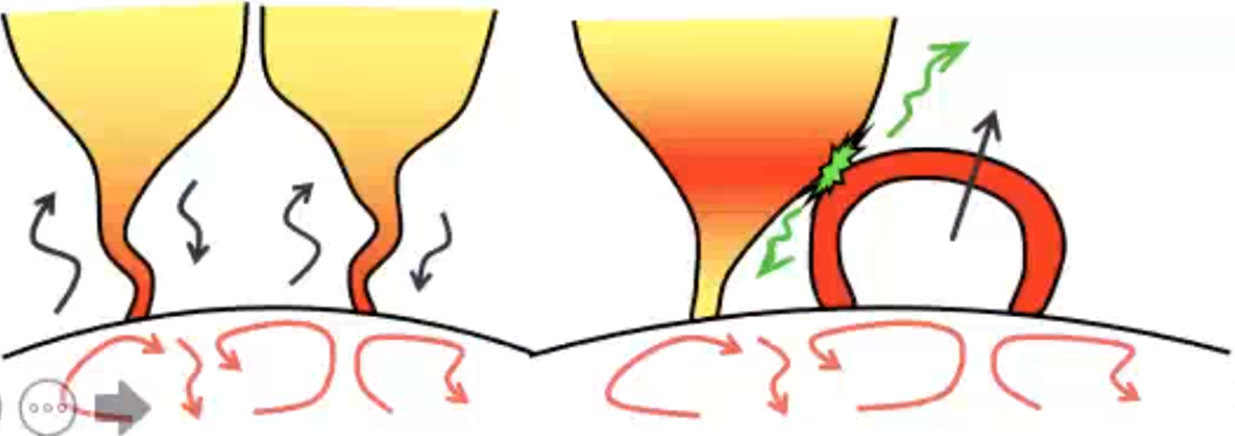
image: steven cranmer
mass loss rate
- considering the mass of a thin shell in wind around the sun with a radius
- this is negligible compared to the solar mass (c.f. AGB stars, the mass loss rate is
) - this is still significant for the loss of angular momentum and spin is slowed down
- the wind is force to corotate with the sun, ie. the sun exerts a torque on the wind, transferring angular momentum and slowing down solar rotation
- the angular momentum:
is called the specific angular momentum - there is a significant magnetic braking
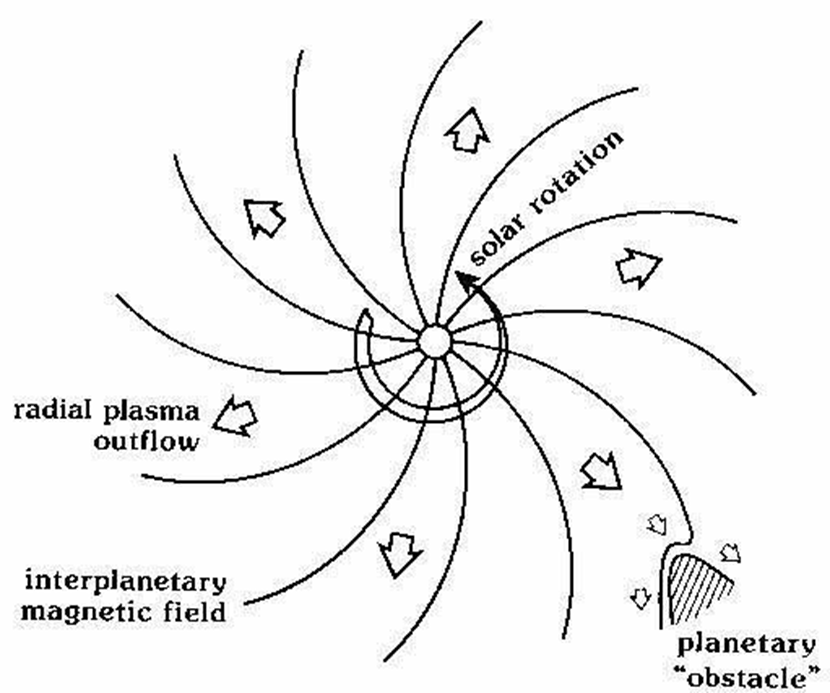
image: NASA, lines represent magnetic field lines and arrows represent solar winds
- solar wind blows a bubble in interstellar medium (ISM), the heliosphere
AU - magnetic reconnection in coronal flux loops can drive solar flares, and coronal mass ejections (CMEs)
- solar flares are sudden released of energy as x-rays,
-rays, radio and optical wavelength emissions - CME is the ejection of plasma from the solar corona
- solar flares are sudden released of energy as x-rays,
- these drive space weather in earth (like aurora)
- they also cause erosion of planet atmosphere and affect the habitability